Honeycomb tiles in the bathroom: features and design options
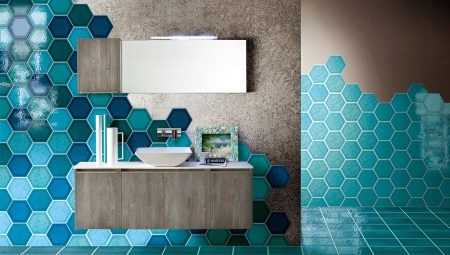
Hexagonal tiles compare favorably with their shape from rectangular and square tiles that have already become familiar. This type of decoration is applicable for cladding walls and floors in the bathroom, and thanks to the variety of colors and patterns on the product, you can create full-fledged mosaics and panels from hexagons, which become a unique decoration of the room.
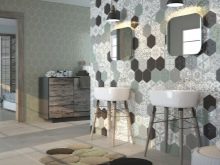
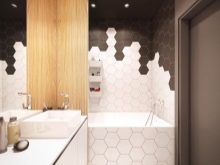
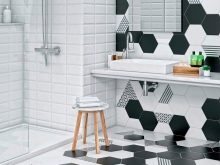
Peculiarities
Ceramic tiles in the shape of a honeycomb are original and can decorate the interior of any room, including the bathroom. In addition, such hexagons are not always of the correct shape - more elongated fragments of the finishing material are provided, as well as their dimensions. The mosaic type of material can be small, the format of large products provides for sizes with sides of 50 cm.
In addition to the shape, the distinctive feature of the product is the ability to simulate various textures during manufacturing.
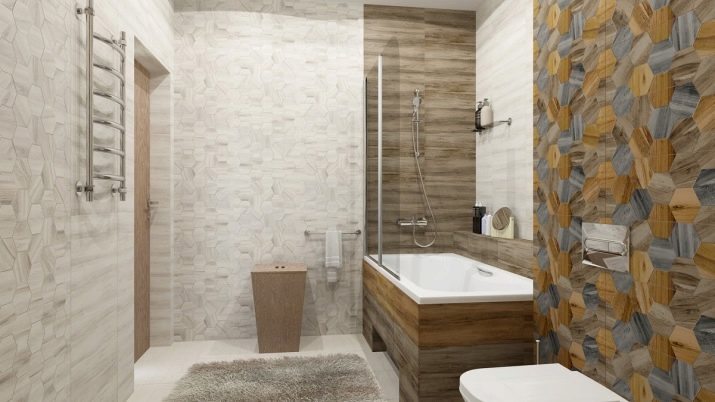
Of course, the base is natural clay, which undergoes special processing at high temperatures.
But thanks to high technologies, tiles can be given the appearance:
- metal;
- concrete;
- wood;
- natural stone such as marble or granite;
- leather, concrete, laminated flooring;
In addition, some types of tiles are decorated with geometric prints in color and monochrome.
These patterns allow you to create unique images on the walls and floor of the bathroom.
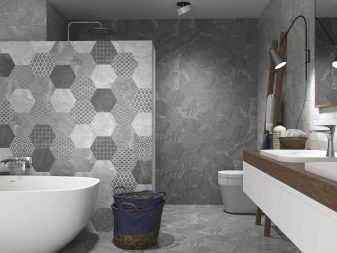
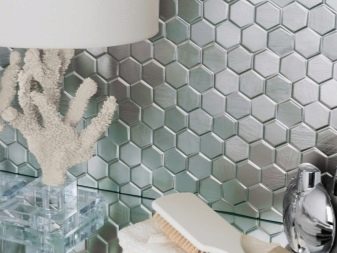
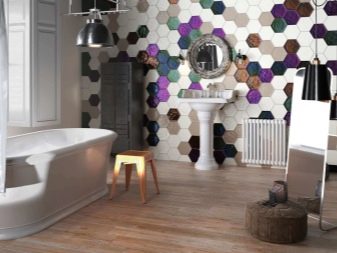
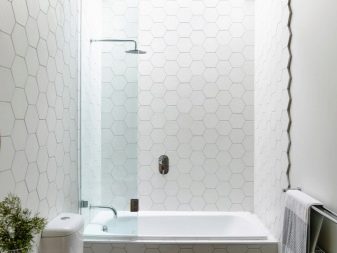
In most cases, these are beautiful, symmetrical compositions that are not quite correct along their lines. In the manufacture of this type of tile, an octagonal shape is sometimes used.
Usually, wall tiles have a thickness of 5 to 8 mm, and floor segments are made with a thickness of 10 to 14 mm. The sizes of the tiles are different - there are miniature products (6.5x7.5 and 15x17 cm), which decorate individual sections of the walls. A larger tile (25x21.6 cm) provides for the presence of drawings and ornaments.
Of the advantages of the finishing material, high strength, fire resistance, moisture resistance, durability stand out. The main disadvantage of hexagons – high cost and complexity of decoration work due to the non-standard form.

Hexagonal tile selection
Hexagonal models are available in a large assortment, so when choosing for a bathroom, you must take into account the size of the room and the style of design.
It is important to determine the dimensions of the floor and wall surfaces in advance in order to determine the total amount of finishes.
It is necessary to buy material with a margin, since during installation most of the segments require cutting.
Honeycomb tiles are different in texture. When choosing, special attention should be paid to this.
- Matte hexagons that are not glazed.
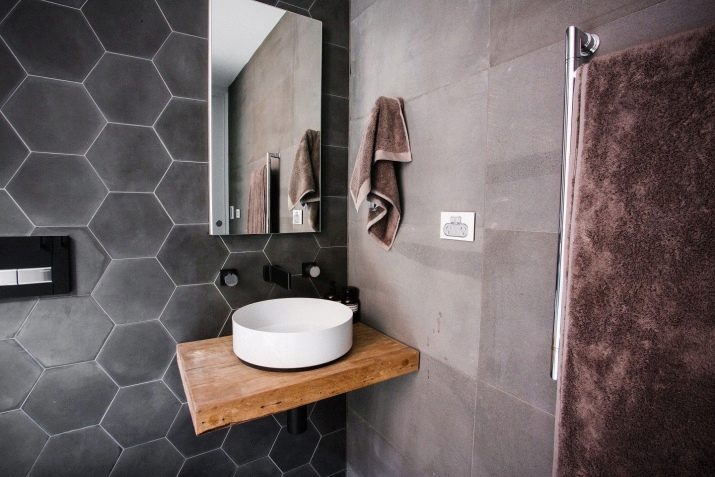
- Glossy Are slippery, smooth and shiny segments not recommended for bathroom floor cladding.
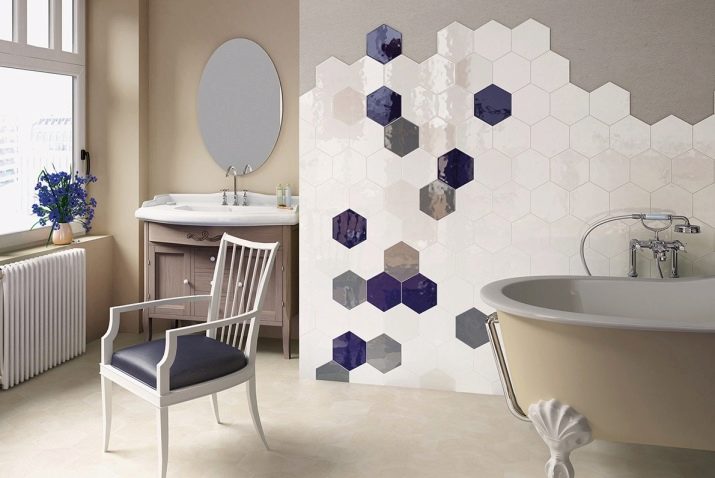
- Embossed tiles and the presence of images - such fragments can be used for both walls and floors.
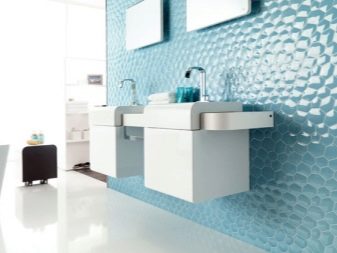
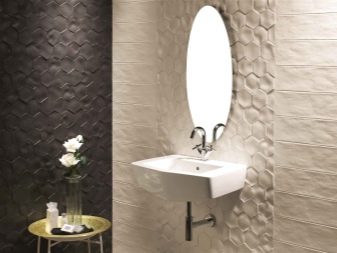
- With a polished natural stone texture. Due to the fact that the top layer is actually removed, such material is fragile and vulnerable, so this should be considered when choosing.
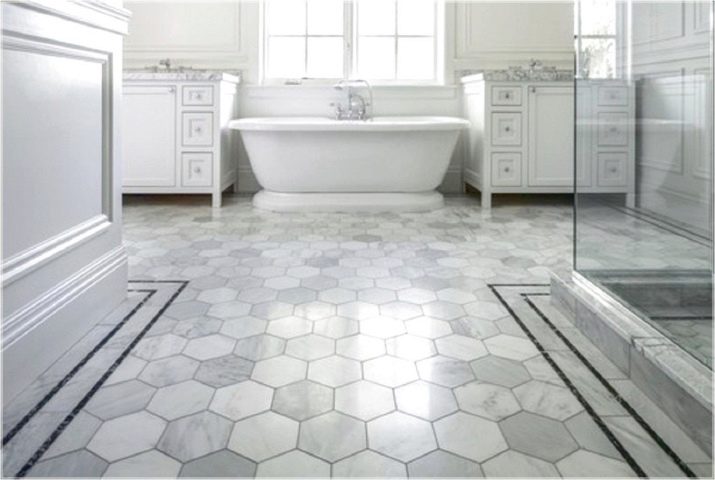
- High strength porcelain stoneware slabsthat can be used as flooring in the bathroom.
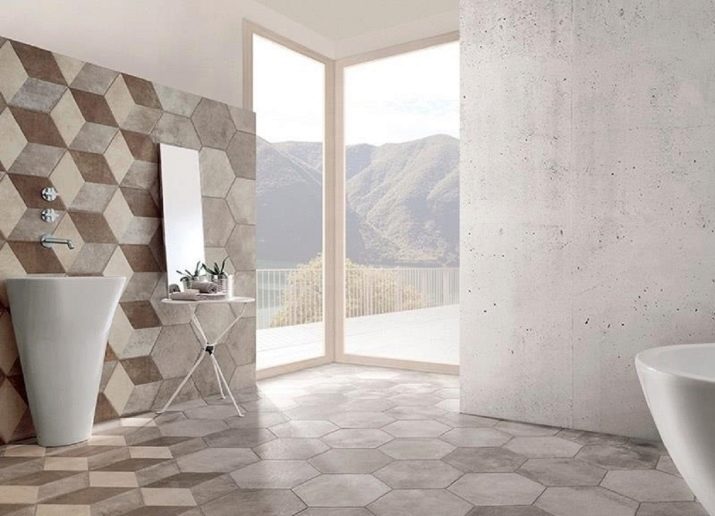
Depending on the size of the room, a smaller or larger tile format is chosen. Of course large items for a small bathroom will not work.
Hexagons in the bathroom interior
Ceramic tiles "honeycomb" in the bathroom can look unusual and original in the form of black and white figures, folded symmetrically or randomly.
This is a classic option suitable for floors with white wall surfaces or snow-white plumbing housings.


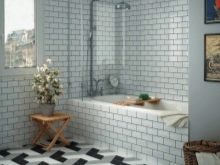
But in the interior of the bathroom, other options are also possible.
- Decorating the central part of the floor using hexagons of two or three different colors and textures will expand the space of the room.
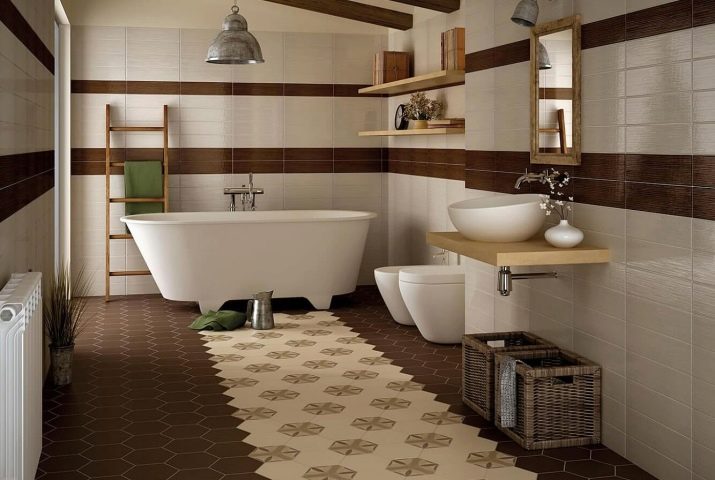
- Geometric ornament in two different shades on the floor, passing into the wall. At the same time, the rest of the bathroom is left without a picture.

- A combination of three colors, one of which is necessarily white, plus a chaotic arrangement of segments throughout the entire area.
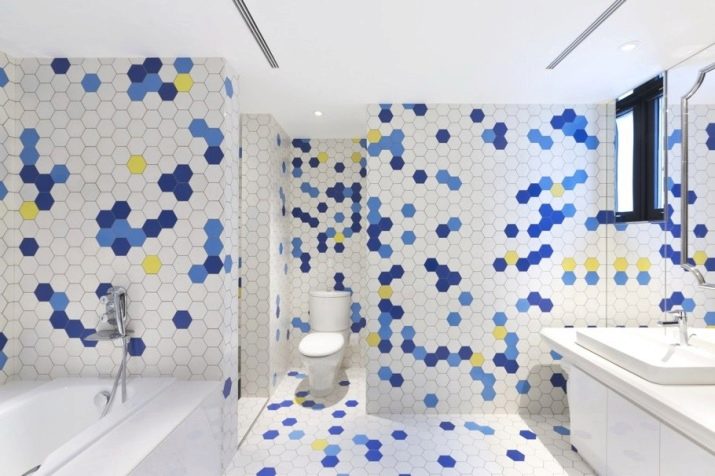
- The above variations are applicable to bathroom walls if the floor is finished with solid hexagonal tiles.
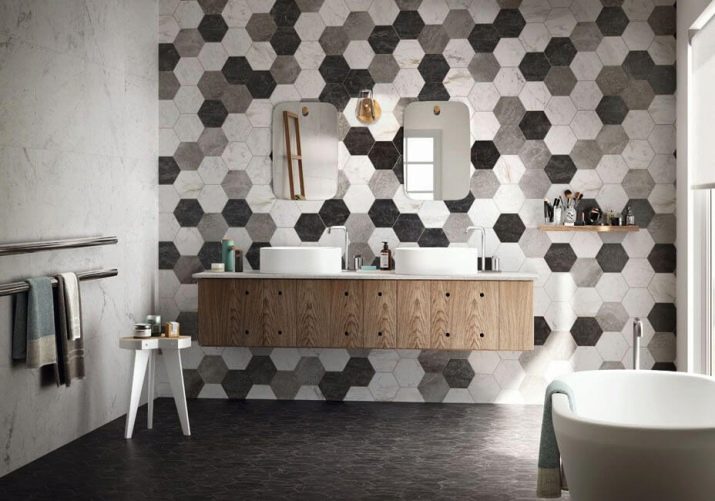
- The floor and walls can be decorated with tiles of different shades of green and blue, and you can combine hexagons on the walls with square fragments on the floor.

The most preferable tile "honeycomb" for bathrooms in modern style, minimalism, hi-tech. And also ideal hexagons are suitable for a bathroom in apartments finished in Scandinavian or any other modern style.
For an overview of the hex tile, see below.








